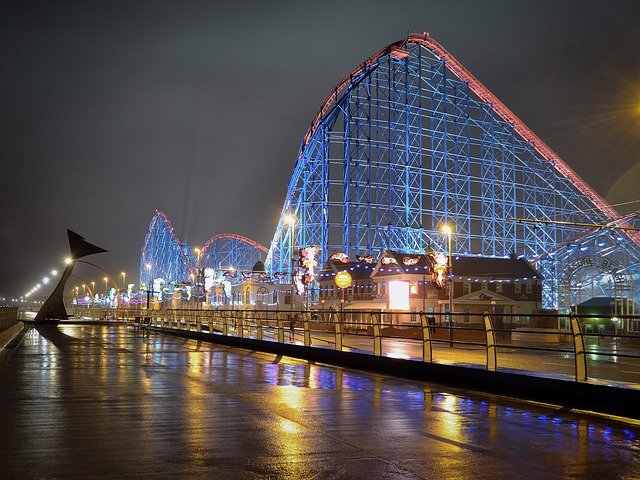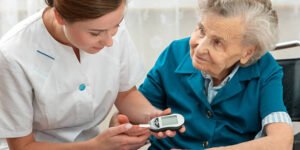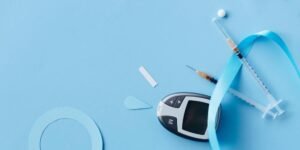
Roller Coaster Blood Sugar Will Lead To Short Lifespan
Recently, the “roller coaster blood sugar” has been rapidly gaining attention. The so-called “roller coaster blood sugar” refers to the rapid rise of the blood sugar concentration after eating, which prompts the body to secrete a large amount of insulin to make the blood sugar concentration drop rapidly, resulting in repeated ups and downs and violent fluctuations of the blood sugar concentration.
When the blood is full of glucose, insulin will continue to act to lower the blood sugar concentration. It will convert the blood sugar into fat, and continuously transport it to the fat cells. As a result, the blood sugar concentration will drop rapidly and become a state of mild hypoglycemia. This will lead the people still feeling hungry even after eating. They have to eat and drink again, and the blood sugar concentration will rise rapidly again. This will form a situation in which the blood sugar concentration of the human body fluctuates violently up and down like a roller coaster.
Have you ever felt drowsy and unable to concentrate in the office a few hours after eating lunch? Or did you take lunch in the afternoon and then feel very tired and weak?
These are typical phenomena when the blood sugar concentration drops rapidly, causing the body to assume a hypoglycemic state. Sometimes it even affects the autonomic nerves, causing various symptoms such as night sweats, anxiety, and headaches. In addition, conditions such as irritability, mood ups and downs throughout the day. It is caused by roller coaster blood sugar as our bodies are so affected by blood sugar levels.
A fact that is difficult to discover during health checkups
Originally, the blood sugar concentration of the human body was 3.9∼6.1mmol\L on an empty stomach. After eating, the value will rise and reach the peak within about 2 hours. In normal situations, the blood sugar level will drop from 7.8 mmol/L and begin descending. For a healthy person, the blood sugar concentration will fluctuate between 3.9~7.2mmol/L throughout the day.
Diabetes will be diagnosed when the fasting blood glucose level is above 7 mmol/L and the blood glucose level is above 11.1 mmol/L 2 hours after meals It is characterized in that the value is high, and there is a huge gap between fasting blood glucose and postprandial blood glucose. If such a number comes up on the health check, it should be checked again, or you may even be told you must be treated immediately.
However, it is said that there are many people who are not diabetics but are actually candidates for diabetes. These are people known as “Prediabetes” and have “hyperglycemia after meals” (although blood sugar levels on an empty stomach are normal, but it takes only a short time to reach extremely high blood sugar levels after eating).
Postprandial hyperglycemia is 6.1-7.0 mmol/L on an empty stomach Postprandial hyperglycemia is 140-200 mg/L 2 hours after eating
If the blood sugar level reaches the above value, you are just a narrow gap to diabetes and it is described as “hidden diabetes”.
Unfortunately, it is difficult to detect the existence of “hidden diabetes” in health checkups. Because the general health examination detects the blood sugar concentration on an empty stomach, and the fasting blood sugar level of people with high blood sugar after meals (hidden diabetes) is mostly standard, so the risk is easily overlooked. Some medical institutions estimated that more than 40% of people have “hidden diabetes”.
Pay special attention if the blood sugar level exceeds 7.8 mmol/L after a meal!
When suffering from diabetes, one of the goals of blood sugar control is to keep the blood sugar level within 2 hours after a meal not to exceed 10 mmg\L. According to the “Guidelines for the Management of Blood Glucose Levels After Meals” compiled and summarized by the International Diabetes Federation (IDF, International Diabetes Federation), if the blood sugar level exceeds 7.8 mmol\L 2 hours after a meal, corresponding treatment must be taken.
People who have a large gap between the blood sugar level after a meal and the fasting blood sugar level before a meal are very likely to cause a roller coaster of blood sugar. In the NHK special programme “Dangerous Blood Sugar Spike” aired in Japan in 2016, we see the latest treatment of diabetes, and myocardial infarction. They pointed out that about 20 out of 65 young and middle-aged adults who were told to have normal results in their health checkups would experience a roller coaster of blood sugar. To judge whether it is a roller coaster of blood sugar, unless the blood sugar concentration in the body is checked within 1 to 2 hours after a meal, it is difficult to know clearly. In specialized clinics, there is also a test called “75g glucose tolerance test”, which is a method in which subjects drink glucose juice first and then measure blood sugar levels over time.
In addition, there are various methods of measuring postprandial blood glucose levels, such as commercially available measuring instruments and the “Abbott Freestyle Libre 2 sensor” (continuous blood glucose monitor) installed in medical institutions. If readers want to know more, please click the following link.
The Best Device For Diabetes — Abbott FreeStyle Libre 2

Roller coaster blood sugar will shorten healthy lifespan
If the blood sugar concentration fluctuates violently in the body for a long time, it will increase the risk of suffering from the following diseases:
- Arteriosclerosis
- Stroke
- Acute myocardial infarction
- Dementia
- Cancer
For “roller coaster blood sugar”, the frightening thing about” is that once the body is in this state for a long time, it is possible to gradually progress from the preparatory group of diabetes to real diabetes. In addition, the sharply fluctuating blood sugar concentration will also burden the blood vessels and may trigger the reaction of reactive oxygen species, resulting in damage to the blood vessels.
Once the blood vessel wall is damaged, the inner side will become brittle, or cause blood vessel narrowing and blockage, which is called arteriosclerosis. If the “roller coaster blood sugar” occurs repeatedly in the body, it may lead to arteriosclerosis everywhere inside the blood vessels and continue to deteriorate.
People who are said to be “so healthy before” are mostly sudden deaths due to diseases such as cerebral infarction, and quite a few of them are caused by roller coaster blood sugar.
It has been established that memory loss is prone to occur when the body is in a state of repeated roller coaster-like blood sugar and high insulin secretion. People who secrete more insulin will accumulate a substance called “amyloid β-peptide” in the brain, which is also considered an important factor to cause Alzheimer’s disease. In fact, current data also show that people whose blood sugar fluctuates like a roller coaster are 1.5 times more likely to suffer from Alzheimer’s disease than people with normal blood sugar levels.
Book Recommendation
Buy “Blood Sugar Diet Mediterranean Recipe Book” online














